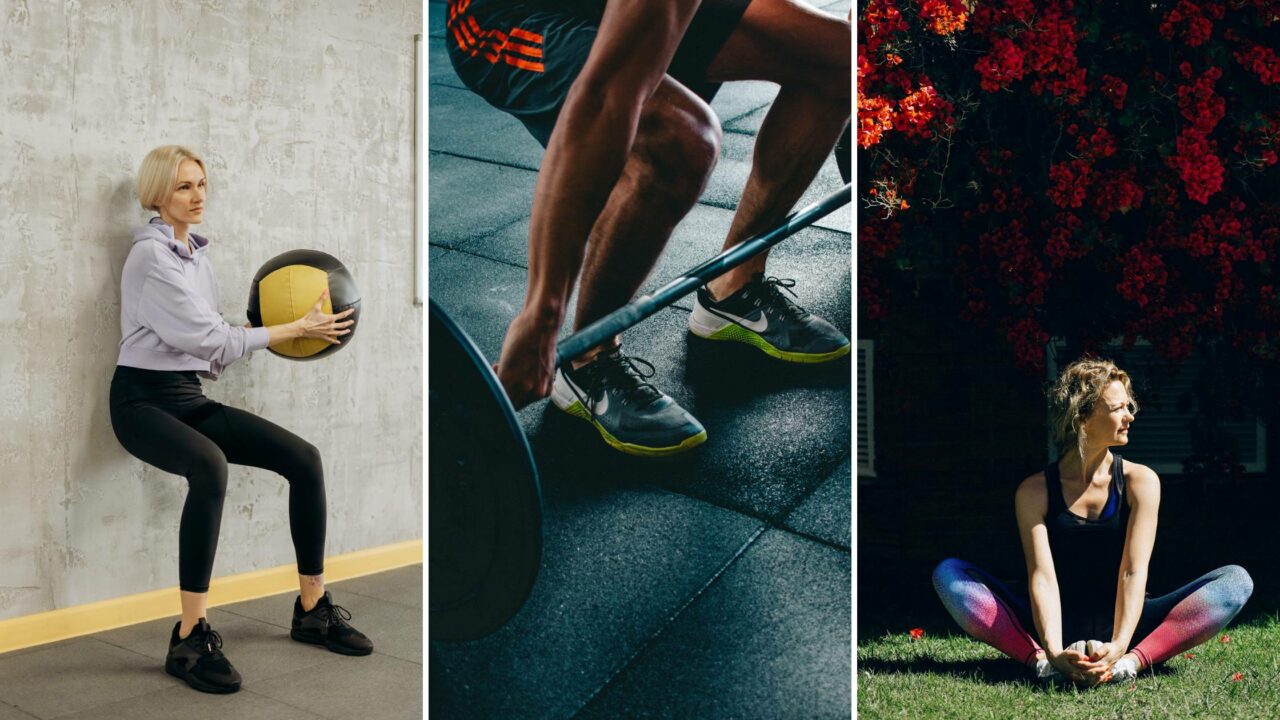Cross-Training for Combat Sports

There’s a reason the greatest sports and hero movies always have a training montage. Practicing a skill is never enough to beat the villain. The good guys prevail because they put the time and effort into building strength and using cross-training to get their bodies into top all-around shape.
Now that you have the Rocky theme song stuck in your head, we can discuss the importance of including cross-training for combat sports. Whether you teach martial arts, boxing, or wrestling, cross-training helps your athletes to prime their bodies for competition.
How Cross-Training Benefits Your Sport
The complex movements and physical nature of combat sports mean that the entire body is utilized. Practicing your sport will allow you to perfect your skills while increasing your fitness. However, cross-training can be the “frosting on the cake” by enhancing your strength and endurance.
Cross-training is doing a supplemental sport or fitness modality in addition to your primary sport. The goal for these additional practices is to strengthen the training of your primary sport.
By incorporating or recommending supplemental modalities with your students, you can help them improve their overall fitness. This will translate into better training sessions, more stamina in competition, and better recovery times.
Building strength through different movements can directly impact a student’s performance. For example, here are some ways that different movements can improve combat:
- Pressing = punching
- Pulling = grappling
- Squatting = fighting stance, kicking, balance
- Hinging = power
- Core = power generation, trunk stability, absorbing hits
Cross-Training Modalities
Yoga
Yoga is one of the most popular cross-training activities for any sport. The combination of stretching, balance, and breathing helps to promote muscle recovery and relaxation. By releasing tension in the body, athletes can prevent injuries and improve joint health.
The practice of yoga includes holding poses for extended periods while focusing on breathwork. This combination builds body awareness and control. Positions like chaturanga and boat pose build core strength, which is essential for maintaining balance, absorbing hits, and putting power into punches during combat.
We can’t forget about the most underrated benefit of yoga for athletes: relaxation. Exercise and combat are stressors on the body, even if they are considered “good” stressors that build our fitness. Taking the time to relax the muscles, calm your breathing, and lower your blood pressure will pay off with faster recovery times.
Cardio
Running, swimming, and cycling are the most popular forms of cardio training. Cardio modalities are used to increase endurance and stamina. They also allow athletes to improve their VO2 max and therefore advance the body’s ability to move necessary oxygen to the muscles.
Low-intensity cardio at a static pace helps promote overall cardiovascular health. It is also a test of mental fortitude as the mind tends to waver before the body does.
To better mimic the changing intensities in the rhythm of combat, interval work is recommended. Whether cycling, running or swimming, you can easily vary the speed, stoke, gait, or gear
Weightlifting (Resistance Training)
Some combat athletes are hesitant to lift weights because they have heard that building muscles will make them bulkier and slower. In reality, resistance training does not cause bulk but it will increase the strength of the muscles.
There are plenty of options when it comes to weight training: dumbbells, kettlebells, machines, Olympic lifting, powerlifting, etc. Students can choose a method that works best for them and their goals.
CrossFit
CrossFit is a great cross-training sport because it incorporates multiple modalities. The sport is a blend of weightlifting, gymnastics, and cardio. This trifecta builds strength, body control, and endurance - all valuable skills for a combat athlete.
While this is a more specific training style, CrossFit has grown in popularity and gyms can be found in most cities.
How To Incorporate Cross-Training at Your Gym
The best way to convince your students to incorporate cross-training in their practice is to make it easily accessible to them. There are a few options for including other modalities at your gym.
Partner With a Personal Trainer or Freelance Coach
You can partner with a fitness coach in a couple of different ways. The most straightforward is to hire a coach to train their specialty on a specific schedule. This would typically be included in the cost of membership for your students and can be scheduled around existing classes.
Another option is to allow a freelance coach to use your gym space for their classes (around your existing schedule). Your students can receive a discount on the classes but the coach can also bring in clients from outside of your gym. Depending on the costs associated, you can split the revenue or ask the coach to pay rent for the gym usage. A lot of martial arts studios and gyms use this method with local yoga teachers.
Create a Reciprocal Program With Another Gym
You can work with another yoga studio, fitness center, or CrossFit box to offer reciprocal discounts or specific cross-training pricing. This takes the responsibility off of you to schedule or offer classes, and it can showcase your business to new potential members.
Set Up a Cardio Club
“Sunday Runday” and similar cardio groups are a great way to get members together for cross-training and socialization outside of the gym. This can also be a cycling group (for those with bikes) or a swimming group at a local pool.
There is usually not an extra cost associated with these cardio clubs because they are considered a community activity for the members. However, you can charge a small fee if you are going to bring in a specialty coach to help with the training.
Local 5Ks or triathlons are another great activity for the gym community. It helps to be working towards a common goal and everyone will be cheering for one another. The group can wear shirts representing your gym at the race as some free marketing.
Communicating the Benefits of Cross-Training
The best time to incorporate cross-training at your gym is before you open. Once the culture of the gym has been established, it can be hard for people to change their routines. If you are beginning to recommend cross-training to existing members, effectively communicating the benefits is important.
Sometimes it can seem like you are telling a child that they should eat broccoli because it’s good for them. You know it’s true and the child knows it’s true, but that doesn’t always make them want to eat the broccoli.
Some members will only want to focus on practicing their sport and not bother with any additional training. Oftentimes, these are the same members that are struggling in one facet of their practice. As a coach, it can be difficult to see a solution to their problem but have the member repeatedly ignore your advice.
Some ways promote and communicate the benefits of cross-training to your members:
- Be specific. A general statement of “you should be cross-training” isn’t going to convince a member to change anything. Recommend a specific modality, such as yoga for increased flexibility, that can help with an issue they are having.
- Use positive reinforcement. Publicly compliment members that have seen improvements thanks to cross-training. Not only will this help the member seem supported but it will encourage other members to do the same.
- Rinse and repeat. If you think a member could benefit from cross-training, tell them. You may need to repeat the encouragement multiple times before they decide to give it a try.
- Understand the benefits. As a coach, you should be able to explain why different modalities complement combat sports. With a better understanding, students will be more likely to incorporate the additional training.
Conclusion
Consider incorporating a cross-training program at your combat studio. Additional modalities, like yoga, cardio, weightlifting, and CrossFit, will benefit your students and allow them to see quicker and more noticeable improvements in their sport. These cross-training activities can be set up by you or by partnering with a freelance coach or local gym. Effective communication of the advantages of cross-training is necessary to encourage participation from your members. When students see the progress they make with the addition of cross-training, their overall satisfaction with your gym and training will increase. These happy and improving students are more likely to stay at the gym and encourage new members to join.
Gym management software that frees up your time and helps you grow.
Simplified billing, enrollment, student management, and marketing features that help you grow your gym or martial arts school.





